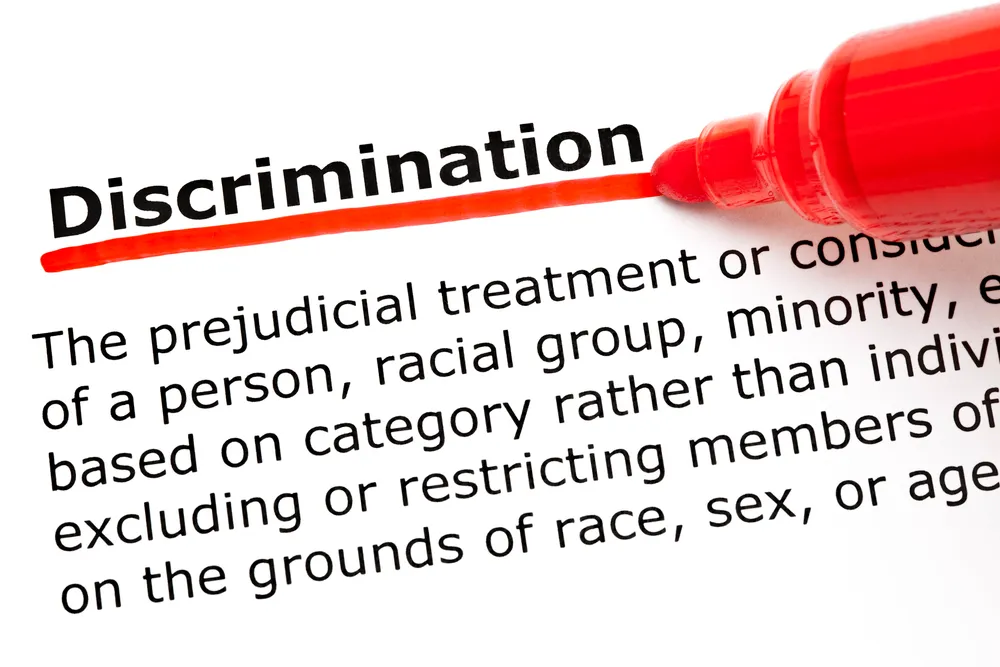Autism Discrimination in the Workplace: Your Rights, Protections, and How to Advocate for Yourself

What Does Autism Discrimination in the Workplace Look Like?
Autism discrimination in the workplace happens when employees on the autism spectrum are treated unfairly, unequally, or excluded simply because of their neurological condition. This kind of discrimination can be overt and hostile, or subtle and systemic—but regardless of how it manifests, it’s unjust and often illegal.
Understanding Autism in the Workplace
Autism spectrum disorder (ASD) is a developmental condition that affects how individuals perceive the world and interact with others. Autism is not a one-size-fits-all diagnosis—each person on the spectrum experiences it differently. Some may be non-verbal, while others are highly verbal but may struggle with executive functioning, sensory processing, or interpreting social cues.
Despite the diversity of strengths and challenges among autistic individuals, many workplaces still operate with outdated assumptions. When employers or coworkers make judgments or decisions based on these assumptions, autism discrimination can occur.
Overt vs. Subtle Discrimination
There are two main types of autism discrimination in the workplace:
Overt Discrimination
This includes clear, explicit acts of prejudice. Examples might include:
- Refusing to hire someone who discloses their autism diagnosis.
- Making derogatory remarks about someone’s autistic traits (e.g., stimming behaviors or communication style).
- Firing or demoting an employee immediately after they disclose they are autistic.
Such actions are direct violations of U.S. disability rights laws, including the Americans with Disabilities Act (ADA).
Subtle Discrimination
This form is harder to identify but just as harmful. It often includes:
- Being excluded from team meetings or social events, leading to missed opportunities for advancement.
- Receiving unfair performance evaluations due to misunderstood traits (e.g., lack of eye contact or difficulty with small talk).
- Managers dismissing accommodation requests or failing to engage in meaningful dialogue about support needs.
These behaviors might not be intentionally malicious, but they reflect a lack of awareness or willingness to support neurodivergent employees—and they often violate federal or local laws.
Fictional Case Study: Jason’s Experience
Jason, a highly capable autistic software engineer, asked to work in a quieter space or wear noise-canceling headphones due to sensory sensitivity. His manager scoffed, calling him “too sensitive” and refused the request. Within weeks, Jason’s performance dropped due to sensory overload. He received a written warning for missing deadlines—a problem that could have been easily solved with a small accommodation.

Jason’s experience illustrates a classic case of autism discrimination. His employer not only refused a reasonable accommodation but then punished him for the natural consequences of that denial. Sadly, this is a common pattern for autistic professionals.
Common Stereotypes That Fuel Discrimination
Some of the most harmful assumptions that contribute to autism discrimination include:
- “Autistic people can’t work with others.”
- “Autistic people communicate too directly [assertively]”
- “They’re too rigid or inflexible.”
- “They don’t have leadership potential.”
- “They’re only good at technical tasks.”
These stereotypes are false and contribute to workplace exclusion. Many autistic individuals thrive in collaborative, creative, and leadership roles—especially when their needs are acknowledged and supported.
Examples of Autism Discrimination at Work (Fictional Scenarios)
It’s one thing to know your rights. It’s another to recognize when they’re being violated. Autism discrimination is not always as clear-cut as someone shouting slurs or sending a termination letter after disclosure. Sometimes, it creeps in through missed opportunities, denied support, or a pattern of microaggressions.
Let’s explore a few fictional but realistic case studies that illustrate how this type of discrimination may unfold—and how legal protections could apply.
Case Study #1: Denied Accommodation and Retaliation
Jason, a brilliant systems engineer in a fast-paced tech company, is autistic and has known triggers for sensory overload. After months of enduring a noisy open floor plan, he finally requests to wear noise-canceling headphones and work remotely once a week—both are reasonable accommodations under the ADA.
His manager replies, “We all have to deal with distractions. You’re not special.”
Two weeks later, Jason is removed from a major client project, with the explanation that he “wasn’t collaborative enough.” His performance review tanks. Jason is devastated.
What went wrong?
- The employer refused a reasonable accommodation without offering an alternative.
- Jason was seemingly retaliated against for asserting his rights—losing responsibilities and being penalized after his request.
Legal Implication:
This is likely a violation of both the ADA and FEHA (if in California). Jason could file a complaint with the EEOC or his state agency.
Case Study #2: Harassment Ignored by Management
Maya, an autistic paralegal in Washington, DC, has a quiet and focused demeanor. Her coworkers begin calling her “Robot” behind her back and snickering when she doesn’t laugh at jokes. In Slack, someone posts a meme mocking “literal thinkers” with a picture of Maya’s face.
She reports the bullying to her supervisor, who shrugs it off: “You’re just too sensitive.”
What went wrong?
- Maya was subjected to a hostile work environment based on her disability.
- Management failed to act, even after being notified.
Legal Implication:
In DC, Maya is protected under the DCHRA, which applies even to small employers. Her complaint could be filed with the Office of Human Rights, and her employer may be liable for failing to address harassment.
Case Study #3: Denied Promotion Based on Assumption
Ahmed, an autistic data analyst with stellar metrics and a spotless record, applies for a senior team lead role. His manager tells him in a “friendly” chat:
“You’re great at crunching numbers, but I don’t think this role is the best fit. You know, it’s a lot of communication, managing personalities… I just don’t want to put you in an uncomfortable spot.”
The role goes to a less experienced—but more socially extroverted—colleague.
What went wrong?
- The manager made assumptions based on autism stereotypes rather than evaluating Ahmed’s actual capabilities.
- Ahmed was denied advancement due to his disability.
Legal Implication:
This is a textbook case of discriminatory bias. If Ahmed can perform the essential duties (with or without accommodations), he should not be denied opportunities. The employer may be liable under ADA, FEHA, or other state laws.
Case Study #4: Miscommunication and Lack of Process
Lila, an autistic graphic designer, thrives on clarity. She asks her supervisor to provide task instructions in writing instead of vague verbal directions given during chaotic meetings. She explains that her autism makes it hard to process verbal information in noisy environments.
The request is brushed aside. Later, she’s reprimanded for “missing details.”
What went wrong?
- The supervisor failed to engage in the required interactive process after Lila’s request.
- Her performance was penalized due to lack of accommodations.
Legal Implication:
Under the ADA, DCHRA, and FEHA, the employer has a legal duty to discuss and provide accommodations unless they pose an undue burden. Lila’s request was low-cost, simple, and reasonable—ignoring it is unlawful.
A Pattern Emerges
Across all these stories, a few themes appear:
| Discrimination Pattern | Legal Red Flag |
|---|---|
| Denial of simple, effective accommodations | ADA / FEHA Violation |
| Punishment following accommodation request | Retaliation |
| Hostile jokes or exclusion | Harassment under ADA / DCHRA |
| Stereotype-based employment decisions | Discriminatory practices under federal/state laws |
| Failure to engage in dialogue | Lack of interactive process – FEHA / ADA breach |
Documenting Incidents and How to Advocate for Yourself
Knowing your rights is empowering—but protecting them requires action. In many cases of autism discrimination, the key to being heard and taken seriously is a clear, time-stamped record of what happened. Whether you’re requesting accommodations, dealing with microaggressions, or facing retaliation, keeping a paper trail can make all the difference.
This section will walk you through how to document incidents, advocate effectively, and use tools like WorkplaceWitness.ai to support your journey.
Why Documentation Matters
When an issue arises at work—especially one involving autism discrimination—you might feel overwhelmed, gaslit, or unsure if what you’re experiencing “counts.” That’s why documentation is so important. A good record:
- Creates a timeline of events
- Shows consistency in behavior or policy violations
- Establishes that you communicated your concerns or needs
- Protects you from retaliation claims (e.g. “They never told us about this”)
🧠 Think of documentation as a shield and a sword.
A shield to protect you in case you’re targeted or misrepresented—and a sword to defend your rights if you need to escalate your case.
What to Document (and How)
Whether you’re just noticing signs of discrimination or preparing to file a formal complaint, these are the things you should write down:
🗒️ Log Details:
- Date and time
- What happened (be specific—what was said or done, who was involved)
- Your response (Did you report it? Were you silent? Did you follow up?)
- Outcome (What changed, if anything? Did it escalate?)
💬 Examples of what to document:
- “On June 14, my request for written instructions was denied. My supervisor said, ‘We don’t have time to cater to individuals.’”
- “Coworkers laughed after I asked a literal question during a team meeting. The team leader did not intervene.”
- “I disclosed my autism diagnosis on May 22. On June 1, I was reassigned to a lower-profile project without explanation.”
📎 Supporting Evidence:
- Emails, Texts, Slack, Teams, Discord, Chime, or Google Chat messages
- Performance reviews
- Meeting notes (keeping notes is important)
- Audio transcripts or recordings(if legally allowed)
- Screenshots or photos
Using WorkplaceWitness.ai for Secure Documentation
One of the best ways to strengthen your documentation process is by using a specialized, private platform built for this purpose. WorkplaceWitness.ai helps employees facing discrimination—especially nuanced issues like autism discrimination—record, organize, and secure their evidence.
Features That Support Your Advocacy:
| Feature | Why It Helps |
|---|---|
| 🕒 Time-stamped logs | Provides proof that notes were made when the events occurred |
| 🔒 Secure storage | Keeps your records private and tamper-proof |
| 🧷 Attachment uploads | Store screenshots, emails, or relevant documents in one place |
| 🧠 Prompted entries | Helps you remember key details, like who was involved and outcomes |
| 📄 Exportable records | Useful if you later file with HR, the EEOC, or an attorney |
| 👨🏫 Visual Story Builder | A tool that shows a timeline of what has occurred, shows parties involved, and related evidence allowing for realtime collaboration and coordination with legal counsel. |
✨ You should NOT wait for things to “get bad.” Start documenting discrimination early—even small incidents can add up to a pattern that proves your case. Remember, documenting things doesn’t mean you’ve made a decision to move forward with making a complaint. You’re just building a “rainy day file” in case.
How to Advocate for Yourself at Work
While the law provides protection, your first line of defense is often your own voice. Here’s how to advocate confidently and clearly in professional settings:
Request Accommodations the Right Way
- Be clear and respectful: “I’m requesting a reasonable accommodation for a disability under the ADA.”
- Describe what you need: “I do best with written instructions. Could we summarize tasks in an email after meetings?”
- Offer collaboration: “I’m open to suggestions that achieve the same goal.”
Report Discrimination
If you experience bullying, exclusion, or other signs of autism discrimination:
- Report it to HR or your direct supervisor (in writing)
- Stick to the facts and refer to your documented incidents
- Follow up if there’s no response
⚠️ Important: You are protected from retaliation. If you’re punished for speaking up, that’s a separate legal violation under the ADA, DCHRA, or FEHA.
Know When to Escalate
If your company ignores your requests or complaints:
- Consider speaking with an employment lawyer
- File a complaint with the EEOC, DC Office of Human Rights, California Civil Rights Department, or other appropriate state entity.
- Bring your documentation (especially from WorkplaceWitness.ai) as evidence
Build a Culture of Empowerment
Sometimes the most powerful change starts with one voice. Here are additional ways to create a more inclusive workplace:
- Suggest neurodiversity training for your team
- Offer to lead a peer lunch-and-learn about autism awareness
- Share resources like Neurodiversity in the Workplace
🧩 “The more we normalize accommodations, the less we ‘other’ those who need them.”
Advocacy isn’t always loud. Sometimes it’s just being prepared, documenting your experience, and knowing what you’re worth.

Stand Up, Speak Out, and Stay Empowered
Facing autism discrimination at work can feel isolating—but it doesn’t have to be a silent struggle. From legal protections to practical tools, you have more power than you might realize. Whether you’re advocating for accommodations, standing up to unfair treatment, or navigating a tricky workplace dynamic, you are not alone—and you are protected by law.
The ADA, DCHRA, and FEHA exist to ensure that your neurological identity is not used against you. These laws guarantee that you can do your job without being penalized for being different. And more than just preventing harm, they open the door to support: to accommodations that help you succeed, and to accountability when employers fall short.
But knowledge alone isn’t enough. The real strength comes when you take action:
- Speak up when you need support.
- Request accommodations with confidence.
- Document everything, early and often.
- Use WorkplaceWitness.ai to securely and reliably document discrimination.
- File complaints if necessary. Protecting your rights protects others, too.
✊ “No one should be defined by a diagnosis. Autistic employees deserve not just a seat at the table, but a voice that’s heard and respected.”
Every time you advocate for yourself, you pave the way for future employees—those who may one day face the same barriers and benefit from the trail you’ve blazed. Autism is not a weakness. It’s a different way of thinking, sensing, and communicating—and that difference brings tremendous value to the workplace.
Let’s build a culture where neurodivergent professionals are empowered, respected, and understood. Because equality isn’t enough—what we need is equity. And that starts with action.
You deserve to work in a place that celebrates your strengths, accommodates your needs, and treats you with dignity. If that’s not your current reality, know this:
🛡️ The law has your back. The community stands with you. And your voice, backed by truth and documentation, is a powerful force for change.
Stay Updated
Get the latest updates about workplace rights and our app launch.